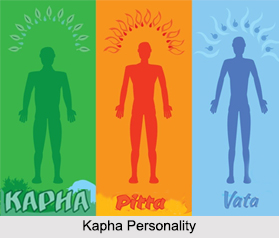 People of Kapha Dosha constitution have well-developed bodies and naturally, a strong tendency to carry excess weight. Kapha Dosha is the third of the Tridosha which comes from the basic elements of earth and water, and makes up all the solid structures of the body. The primary function of Kapha is protection. It is responsible for firmness, binding, heaviness, strength, sexual potency, forbearances and restraints.
People of Kapha Dosha constitution have well-developed bodies and naturally, a strong tendency to carry excess weight. Kapha Dosha is the third of the Tridosha which comes from the basic elements of earth and water, and makes up all the solid structures of the body. The primary function of Kapha is protection. It is responsible for firmness, binding, heaviness, strength, sexual potency, forbearances and restraints.
Physical Features of Kapha Personality
People of Kapha Dosha constitution have well built and attractive body. The veins, tendons and bones are not prominent but the muscle development is good. These people have fair and bright complexion with soft and lustrous skin. Kapha types may become overweight, sleep excessively and suffer from asthma, diabetes and depression.
Physiologically, kapha people have regular appetites. But due to slow digestion, they tend to consume less food. They are fond of pungent, bitter and astringent foods. Stools are soft, pale in colour and their elimination is a slow process. They enjoy sound and prolonged sleep. Their perspiration is moderate. These type of people record a strong vital capacity with good stamina. As far as memory is concerned they possess slow receptive graph but prolonged susceptibility. The signs of kapha dosha imbalance include ailments like nausea, lethargy and looseness of limbs, inertia, boredom, laziness and many more.
Psychological Features of Kapha Personality
Kapha persons are naturally calm, thoughtful, caring and loving. They have an inherent ability to enjoy life and are comfortable with a routine. When in balance, Kaphas are strong, loyal, patient, steady and supportive. People with an excess of Kapha tend to hold on to things, jobs and relationships long after they are no longer nourishing or necessary. Excess Kapha in the mind manifests as a resistance to change and stubbornness.
This article is a stub. You can enrich by adding more information to it. Send your Write Up to content@indianetzone.com




















